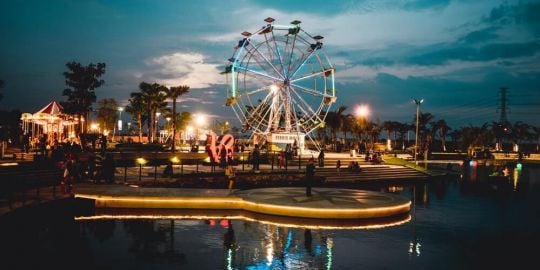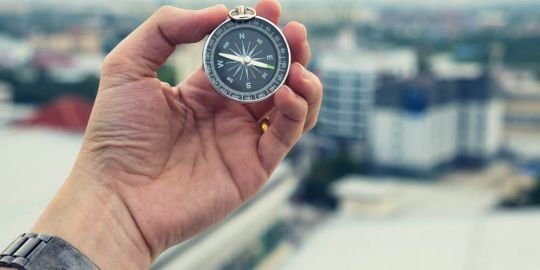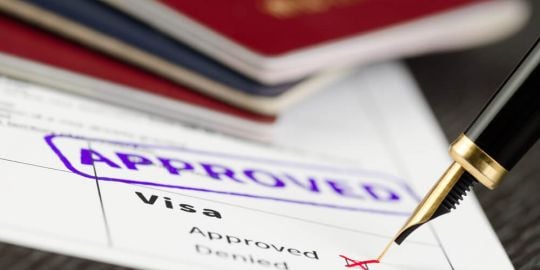If I come to Nepal about which I have heard so many good things, it is to trek. I love the mountains and I want to see the Annapurna region in particular. Can anyone guide me or advise me on how to go - , most probably in a group, no? This is because I want to feel safe. Personal safety is now very much on my mind after a nepali friend who does treks/hotel reservations just phoned me in Europe to say that two foreigner girls were missing in Nepal, one just in the last few days (apparently on a 7 day trek to or from Annapurna Base camp) and a second girl, I understand she was malaysian but again, the incident apparently took place in the same region about 5-6 months ago. That girl is apparently still missing.
I do hope and pray that both girls will be found very soon, because my friend did say that the nepalis were doing everything they could to find these two missing trekkers.
I hope these are isolated cases, but then my friend told me to read the HimalayanTimes which I did on epaper.thehimalayantimes.com There, online, I found the article he was talking about (July 25th, 2016 issue, page 5) and I must admit I got a bit scared because the article said that - (quote) - "according to data at the ministry of culture, tourism and civil aviation, 400 tourists on average go missing and die every year."
Is this a typographical error ? or is it possible that the quote was taken out of context, in this newspaper which is said to be no. 1 in the country, with a solid reputation of reporting most reliable information, I am told by people who read it in Nepal?
I am still positive on coming to visit and trek, but I have to admit that this report, if correct, is a bit disconcerting to me personally. To be reassured, I very much hope other trekkers can write in and tell me about their uneventful experiences in that region, and the country in general?
let me hear from you all! and share your experiences with me, hopefully before I plan my next trekking trip.
Trekking in Nepal: safety precautions
What many people coming to Nepal seem to forget is that this is the Himalayas, not an amusement park. I recently wrote a blog post. Actually, I posted it after reading your questions. We had one guest who walked to the trekking route from our guest house and didn't bother to take sunglasses or sunscreen. Others wrap duct tape around a walking stick in case their shoes come apart while trekking.
My best tip for staying safe is to either hire a trekking company or at least take a licened free-lance guide. Imagine getting into trouble on the trek, and your friends all ask you about it. After the long story, your friend looks at you and asks, "Why didn't you hire a guide? I hear you can find a trekking guide for just a small amount over European prices." How would you answer?
Hope you have a wonderful time in Nepal. It really is a safe country. The police are respectful and the people are kind. People come to Nepal for the mountains, but fall in love with the people.
Here's my blog post. Please comment and share.
goo.gl/Y7fWXU
Hi,
Reverting to the comments you previously posted here, quoting official sources that "400 tourists on average go missing and die every year" in Nepal, I am afraid I am unable to confirm or deny the accuracy of that report.
What can be said, however, is that from sources deemed to be reliable (Himalayan Times of April 27, 2017) it is now reported that a massive search has been intensified for another tourist who went missing in Langtang region of Rasuwa on March 6, 2017. Since then, the Nepal Army with the help of sniffer dogs have expedited the search for Danish national, Martin Udsen Overgaard, aged 26 and this is according to Rasuwa's Chief District Officer, Phanidra Prasain
Many tourists get hurt, actually 1 out of 5 have major symptoms and one of the symptoms is slower thinking. Another symptom is clumsiness. Would you want to be alone in the high Himalayas with these conditions? The best protection is a local, professional guide. They will keep you safe for less than an hour's salary in the west for a full day's work.
Also, the Nepali up in the trekking country are very poor. They cannot grow much and it's so cold! Even air is at a premium. So, it seems to me that it is only fair to provide someone with a job for a few days along your way. Bring them an extra jacket or shoes (size 7-8 US, 38-40 European size). Pack a bit of lentil or rice in your bag to share with host families, etc.
Imagine someone coming to your country from Denmark or somewhere like that where the people are fairly affluent and then seeing them slip into Disneyworld or eating in the parks instead of spending a bit of money on food. How would you feel about someone like that? Remember, we all represent our country of origin.
Tourism is the biggest industry in Nepal and many other countries. If you don't spend money you can't really call yourself a tourist; you are more like an immigrant.
I could not agree more with those excellent safety precautions which have been posted here. Mother Nature in Nepalese Himalayas is beautiful, but make no mistake, it is very unforgiving. Using trekking companies or using experienced guides to accompany trekkers is the best advice - identical -
to the one I also give to my people when they come to Nepal.
Within the latest two months period, website reference and tracker, Missingpersons.com, reported three missing trekkers. Latest details they provide: One found alive after 47 days; one very sadly died; and third one (the Dane) is still missing. We can only hope he, too, will be found.
Independently of this, in a widely reported case in nepalese newspapers, a South African man was caught by nepalese authorities trying to climb Everest last month without a permit - and here again -
WITHOUT a guide. Claiming he did not have the money to get a climbing permit because, he said, he'd spent the little money he had on special gear and training, he nevertheless agreed to trek down from Everest Base Camp best he could and return to Kathmandu. It's been reported he was fined 22,000 dollars.
Like MadagascarNow quite rightly reminded us some time ago when she blogged, coming to the Himalayas of Nepal is not an amusement park. It's just been reported that the death toll on half a dozen of this country's mountains above 8000 metres has now reached 20 to-date - this year alone. In the period 1921-2018 inclusive, 293 people sadly died due to accidents on similar high mountains (i.e.175 visitors from abroad together with 118 Sherpa professional guides). Regrettably, the number of 20 deaths just announced for 2019 does not compare well with the much lower annual average of 4 per year which had been observed in that long period stretching from 1921 through 2018.
I'm going through a very challenging time right now and have learned a lot about health, hospitals and such in the past couple months. Here's one video I did about the government hospitals, but then I got injured and haven't uploaded it yet. I try to help as much as I can with the videos and use my own experiences. The next video will be seriously important, too. It's not to be taken lightly, but it's such a gentle people here in Nepal. I love living here, in spite of the health challenges. How scary is Nepal's healthcare system?
Your information is timely. Within the last 48 hours, well known Bir Hospital - run by the National Academy of Sciences, a Government Agency - reported it had to indefinitely close its CT Scan service after radiation was found leaking from poorly shielded rooms within its walls. Exposure to high level radiation is scary and can lead to cancer, skin burns, impotency and other ills.









